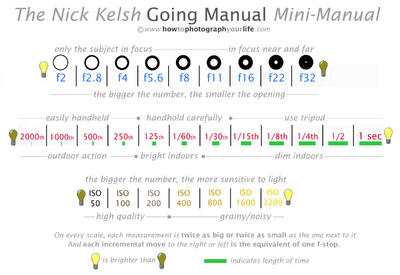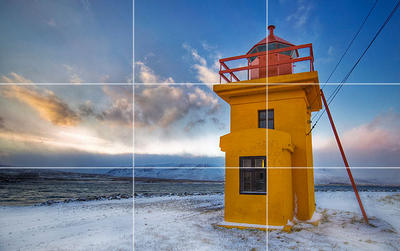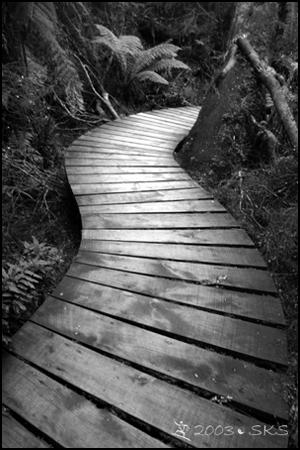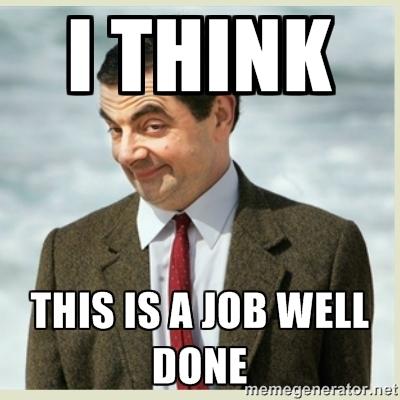Ive been on NS for a while now and recently I've really gotten into photography and amateur videography.
I know this is not a photography forum only but I thought this would really help someone starting out and how invaluable this would have been to me if it had been here when I was learning this stuff. I search barred but didn't find much, so here it is.
A BEGINNERS GUIDE: MANUAL PHOTOGRAPHY
In this guide I decided to incorporate the most useful stuff for manual photography that I could think of without making this too big of a post. This thread is open to people suggesting techniques or asking questions. Although this guide is tailored for beginners it can still be useful to everyone, I found myself relearning some of the techniques here after a while of neglect!
The Basics: There are three important factors that will determine the quality, brightness and sharpness of a photo: Aperture, ISO and Exposure. The first step in manual photography is mastering these. Here is a cheat sheet that you can print out that highlights the basics, its nice to keep one of these with your camera as a refresher ( full image credit to Nick Kelsh www.howtophotographyourlife.com)
The Aperture controls how large the hole that lets light through is. It is measured in F Stops and usually ranges from 1-25. The longer the lens the higher the minimum aperture is. If the aperture is smaller (e.g. 1-3) the depth of field will be shorter and everything will be brighter. A shorter depth of field means that less will be in focus, allowing for great macro and portraits.
ISO controls the sensor's (or film's) sensitivity to light. The higher the ISO is the lighter everything will be, however as it gets higher the image starts to look grainy.
If you are taking pictures at night or in a dark room you should put the ISO up to make it brighter and if you are shooting something you plan on converting to black and white (Or taking pictures directly in this format) you could consider having a higher ISO as well that would give a nice grainy texture that looks good on B&W pictures.
The exposure controls how long the sensor or film is exposed to light and is measured in parts of a second, or whole seconds. The most important feature you get from controlling this manually is allowing you to adjust how quickly an image is captured i.e. you can set it lower (1/400) to capture motion as a still or make it higher (1") to take a picture of a waterfall where the water would be a blur.
A good rule used to determine what combinations of these three to use is sunny 16. Note that this should only be used as a guide and not a firm law. The basic rule is, "On a sunny day set aperture to f/16 and shutter speed to the [reciprocal of the] ISO Film Speed [or ISO setting] for a subject in direct sunlight."For example:
- On a sunny day and with ISO 100 film / setting in the camera, one sets the aperture to f/16 and the shutter speed to 1/100 or 1/125 second (on some cameras 1/125 second is the available setting nearest to 1/100 second).
- On a sunny day with ISO 200 film / setting and aperture at f/16, set shutter speed to 1/200 or 1/250.
- On a sunny day with ISO 400 film / setting and aperture at f/16, set shutter speed to 1/400 or 1/500.
Shot Composition:
Rule of thirds: This is one of the most important aspects to composing a good shot. It is not essential to follow but it makes images generally become more interesting and allows you to compose them more purposefully.
The rule of thirds states that you should not put your subject in the centre of the photo because it makes the photo boring to look at. The way to get around this is to imagine two evenly spaced lines on the photograph vertically and two lines horizontally. Try to make the centre of the subject align with one of those intersections. Here is an example:
Viewpoint: The viewpoint has a massive impact on how people will view your image, and as a result it can greatly affect the message that the shot conveys. Rather than just shooting from eye level, consider photographing from high above, down at ground level, from the side, from the back, from a long way away, from very close up, and so on until you get the exact shot you want. The key thing here is to experiment: Try things until you find what works best for you.
Framing: This is an important technique often used in the film industry. I think the best example of this is Alfred Hitchcock. Framing basically means surrounding your subject in a natural frame, much like an artist surrounds a painting to give it more emphasis. This can be a very powerful way of emphasising a certain area or person. It is important however to use this effect sparingly as it can really devalue it if it is used too often.
Leading lines: Leading lines is a technique that can be used to draw a viewers gaze across a scene. People will naturally follow lines with their vision when they see a photo, and this technique is used to take advantage of this. The Photo below provides a good example of this: the paths draws you to look all the way through the picture, drawing your view from the bottom to the top.
This technique can often be used to draw a persons gaze to the subject or to give the person a chance to look through the whole picture in the direction the photographer wants him/her to.
Simplicity: Simplicity means letting your subject be the most complex part of your picture. If there is a really busy background chances are the viewer will be distracted from the main message. In order to avoid this it is possible to try to keep the background simple. This is especially important in certain wildlife photography and in portraits, since by far the most important part of the picture is the subject. The easiest way to solve this is to use a lower f-stop to blur out the background of the image. It is also possible to try to back the subject in a simple but beautiful setting, like a cafe, field or a ski slope!
Lighting: Lighting is really important in shot composition. It is critical to get the correct lighting. In studios, there are often at least three categories of lighting used: front lighting that falls directly on the subject highlighting it and putting it in the spotlight, there is a backlight that falls behind the subject preventing bad shadows and finally there is a light that lights up the background and gives the subject context. To give the example of an urban setup imagine a skier taking a rail. There will be a front light that will light up the skier, a side light that will make the photo look more interesting and finally a backlight that will light up the rail and possibly some context like a building behind him or a tree right next to him.
Ps. These rules are there to guide photography so that we can learn how to intuitively compose great shots. First of all, these rules are not the law, you don't have to follow them and in fact sometimes it is better not to. Second, it takes practice to get good at using them
Gear:
Lenses: Lenses are a key part to any camera and a pro photographer could easily spend more on lenses than actual cameras.
Lenses come in two varieties: Prime and zoom. Prime lenses are fixed and cannot zoom, although they can focus better and are significantly cheaper. Zoom lenses allow you to get an "All in one lens" deal where you can have 1 lens that handles all of your shots. This is the best choice for amateurs and people just starting out not wanting to spend $2000 on 5 different lenses. Read on to find what type of lens you need. For a more complete buying guide check out Jamie's awesome work here: https://www.newschoolers.com/ns/forums/readthread/thread_id/605334/
MM rating: When you look to buy a lens the first thing you will see is something like 18-55mm, meaning that the lens can adjust between an 18 mm to 55, allowing you to have a relatively wide shot and a nice portrait lens at once.
Here is a rough guide that will show you what they mean.
<12mm- Fisheye
This is would be considered a fish-eye lens, allowing for a bigger field of view at the expense of image distortion. These lenses are often used for action filming because they allow you to get near to the rider while still seeing some setting.
12-18mm- Super Wide Angle lens
This is a wide angle lens which captures a wide image with less distortion than a fisheye gives. They are perfect for architecture and action sport since they allow you to be close to the subject and still retain a good amount of angle of view.
18-35mm- Wide Angle lens
This rating allows a relatively wide image while keeping the distortion to a minimum. This is a good range for general photography, filming and any general stuff like that. These lenses are the best for Landscape photography as they do not have too much distortion but
35-65mm- Normal lens
This is an ideal size for a prime lens if you are only looking to buy one lens. It is perfect for portraits and has a quick zoom that can adjust to really small distances around a foot (25 cm) These lenses provide a decent field of view and have almost no image distortion. This is good for general photography and uses like family/wedding photography. Lenses around the 35mm mark are perfect for a compact 1 piece kit since they will Auto Focus quickly and yet be quite small
65-100- Zoom Normal lens
These lenses are quite zoomed and better for specialised applications. You would not tend to get these as a kit lens and if this was your only lens it might not be as useful as some other sizes. They are good for general photography to quite zoomed images.
>100- Telephoto lens
These lenses are very zoomed in and are good for nature photography where you can't get close to the subject. The further you zoom in the less depth of view there is meaning that things appear to be flat and the same size. These lenses can also be used for sports photography.
Here is a good example of how these different lenses affect field of view:

http://www.dptips-central.com/image-files/lenses-angle-of-view.jpg
When buying a lens and camera you need to consider that the lens could easily cost more than the camera itself. However, for a first lens there is no need to spend more than $500.
Tripods can be useful for filming and nighttime shots where it is important to hold the camera still. A tripod that costs $30 will not be as sturdy or reliable as one that costs $100, do you really want your $1000s of dollars of kit being supported by cheap unreliable gear? I thought so, so invest in a nice tripod!
The company that I use is Manfrotto, they are reliable and well known for their craftsmanship and build quality, but not as expensive as some others like Gitzo. The price difference may seen like a pointless waste but I urge you to be willing to shell out quite a bit of dough for a nice tripod
Sound recording is a hugely important aspect when it comes to filmmaking. The difference between a school project and an amateur short movie can often be the quality of the sound: the built in mic often just can't handle the situation. The solution to this problem is buying a nice external mic. Some of the best miss in an affordable price range are made by RODE, the company that I personally use. Having an external mic gets rid of that background static noise that is often heard from built ins and it can help to reduce the sound of the camera getting bumped or touched a bit. The final advantage to an external mic is that they will greatly reduce the effect wind will have on the sound.
I hope that this guide helps, if I made any mistakes feel free to correct them below. I spent a REALLY long time on this, so tell me what you like and don't like, feedback is always great. :)
Enjoy,
DR_KING_SCHULTZ


















